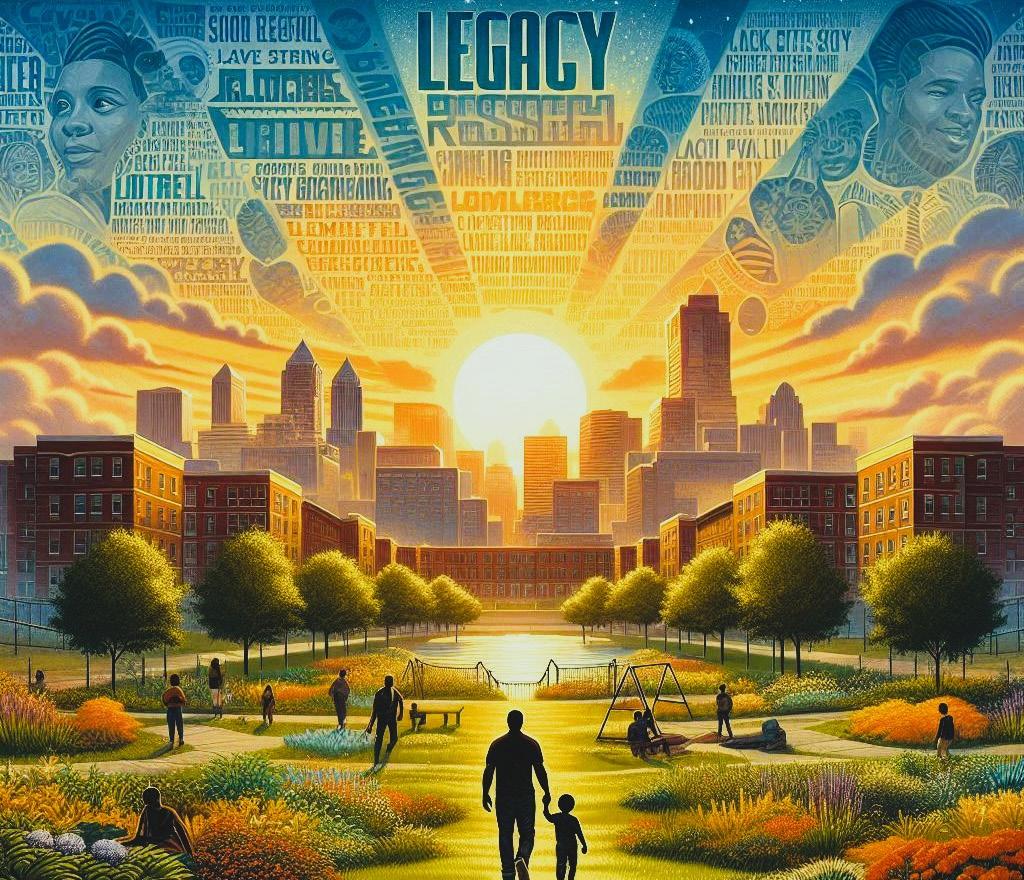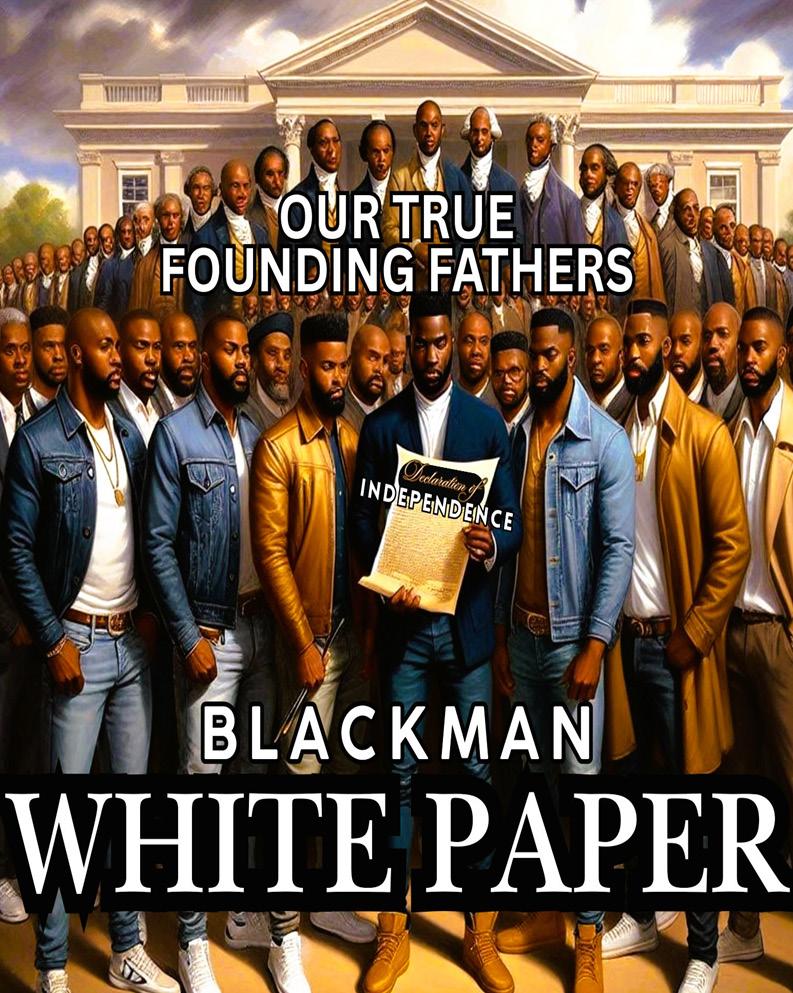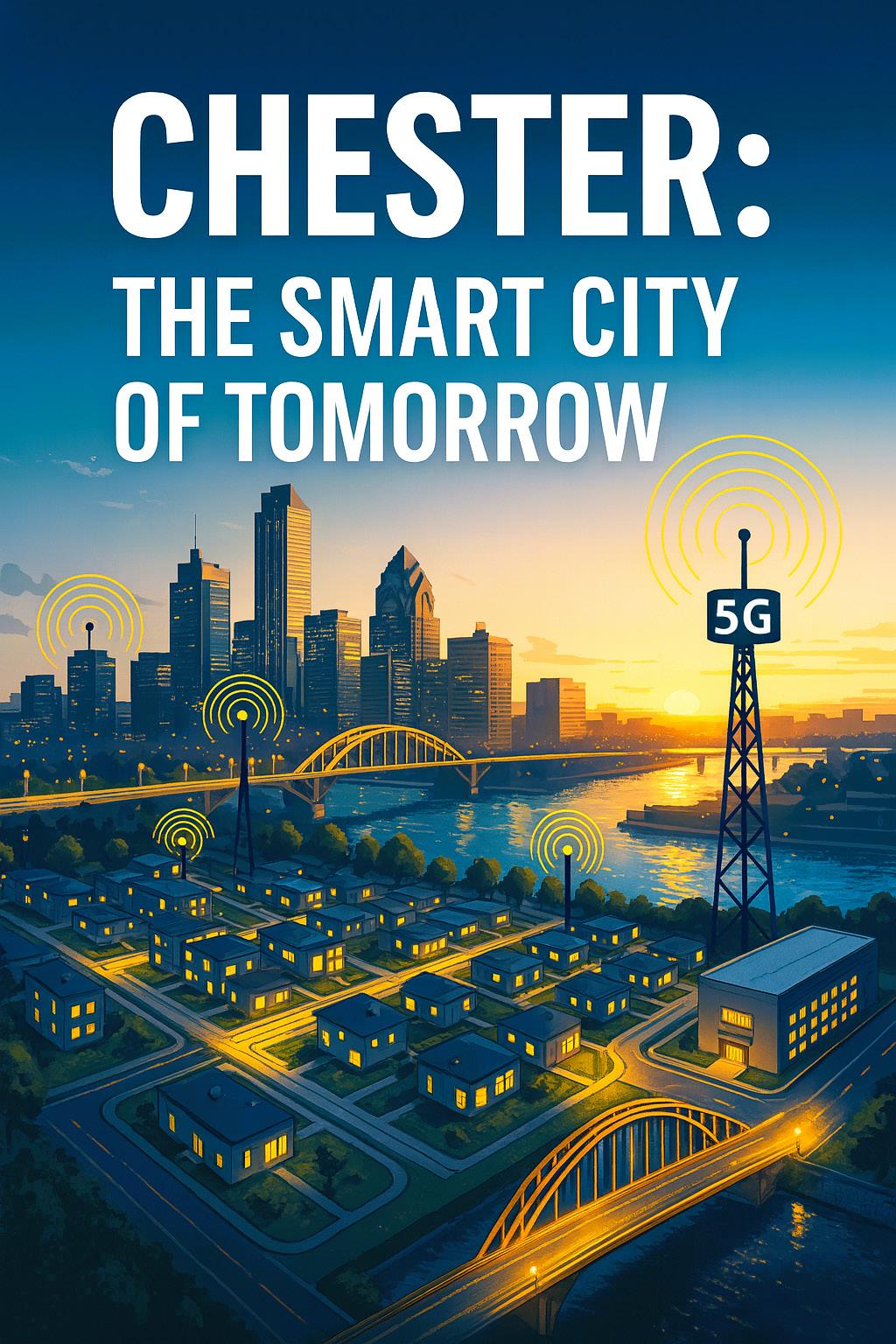

BLACKMAN WHITE PAPER PART 2
A Legacy Blueprint For Chester’s Future TWO VOICES
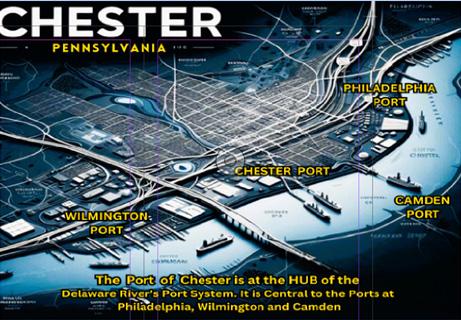
THE SILENCE IS LOUD
ONE VISION
I sent Part 1 of the BLACKMAN WHITE PAPER to Chester’s Mayor, to CRQL, to the NAACP Chester Branch, and to the Black Ministers Association of Chester. I sent it with hope. With respect. With urgency. And I received no reply.
No acknowledgment. No questions. No engagement.
This silence isn’t just disappointing—it’s revealing. It tells me that the gatekeepers of Chester’s future are either overwhelmed, uninterested, or unwilling to confront the truths laid bare in Part 1. But silence is a response. And in a city under financial receivership, where Black families are navigating generational trauma, economic exclusion, and civic neglect, silence is a luxury we cannot afford.
I’m not angry. I’m awake.
While Chester’s elite stayed silent, the community spoke. A Wilmington Christian Minister challenged me to define Melanin through Scripture (GOD’s Masterpiece), and a Philadelphia Muslim Entrepreneur asked me to show economic solutions (UNI DRONES). These weren’t official replies, they were spiritual echoes and intellectual affirmations, proof the message reached far beyond City Hall. People outside of Chester care about Chester.
And then my own brother asked me, “Where’s Part 2?”
That question reminded me: this isn’t about recognition. It’s about responsibility. I didn’t write Part 1 for applause. I wrote it to open a door. And now, I’m walking through it—whether I’m joined or not.
My name is Frank E. Porter I AM BOOTS ON THE GROUND.

“No man is good enough to govern another man without the other’s consent.”
— Abraham Lincoln
Executive Summary
THE ART OF GOVERNANCE: A Chester Blueprint
Governance is not about titles—it’s about the people and their power to shape their own community... their power to shape their own community. In Chester, that power has been stripped. The city is in receivership, and its residents have no say in their financial destiny. When a politician becomes an administrator, the role shifts from campaigning to managing the health and prosperity of the people. But in Chester, that management has been outsourced to a state-appointed team—an external force that functions like a modern-day colonizer, imposing systems without consent.
This is not a partisan critique. Whether Democrat or Republican, any official who participates in this system—whether through tradition, intimidation, ignorance, survival, or profit—becomes part of a colonial framework that denies Chester people their right to self-determination.
Politics is the struggle for power. But Chester’s crisis is deeper: neither the politicians nor the people hold real control. The city’s governance model is outdated, like trying to manage a digital-age community with parchment paper-era tools. The problem isn’t the people. It isn’t even the politicians. It’s the colonizer-imposed system itself. Not Chester City.
Receivership is not Recovery. And until Chester reclaims its governance, its prosperity will stay in the hands of outsiders: modern-day colonizers.
BLACKMAN WHITE PAPER PART 2
BLACKMAN WHITE PAPER

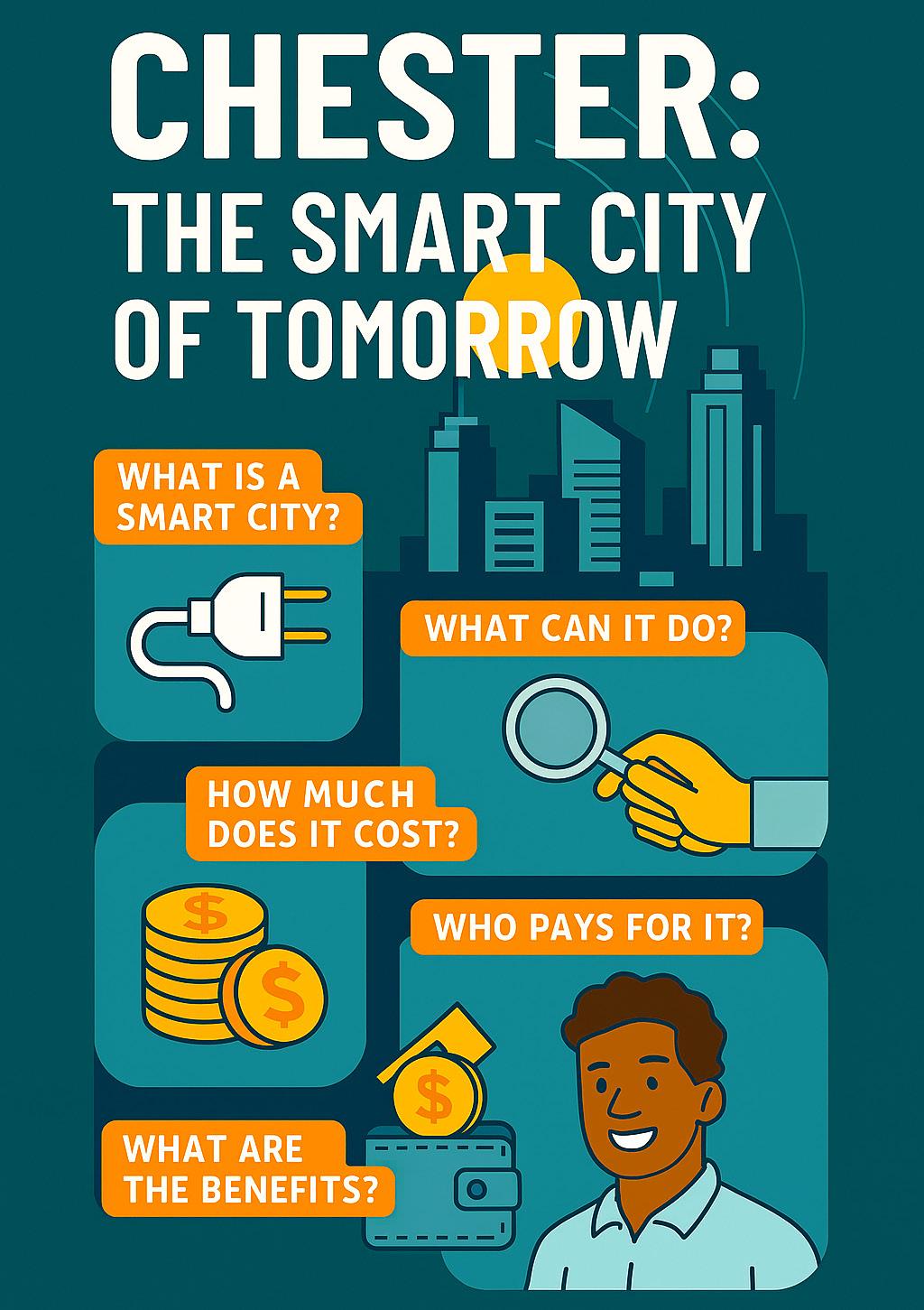
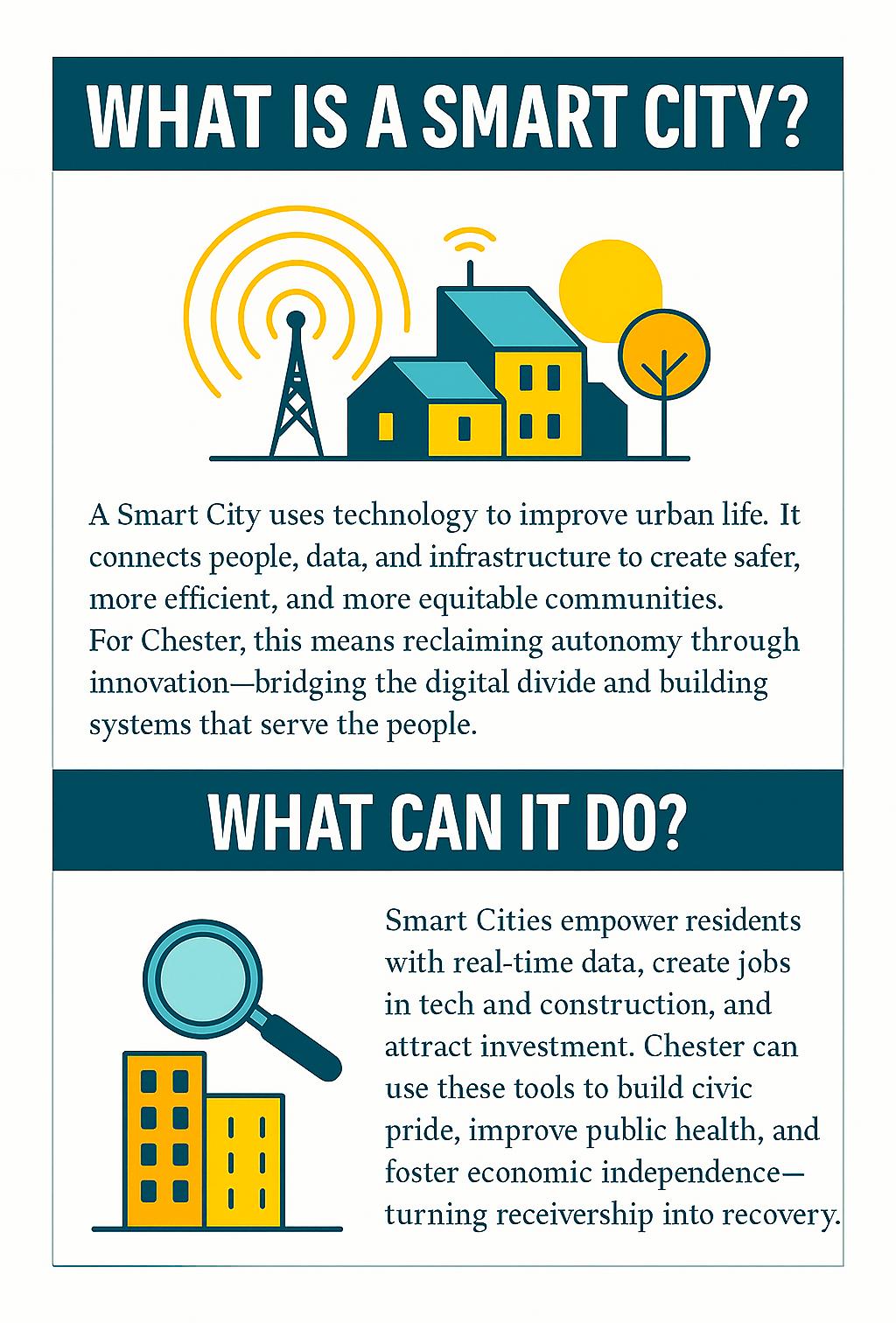


FOR CHESTER RESIDENTS


Chester doesn’t need more oversight. It needs ownership
TAXATION WITHOUT REPRESENTATION
ISN’T RECEIVERSHIP: IT’S TYRANNY!
TYRANNY: Cruel or Oppressive Government or Rule.
Introduction: Receivership vs. Representation
Under Pennsylvania’s Municipalities Financial Recovery Act (Act 47), Chester’s governance team was appointed by the state, not selected by its residents. The Commonwealth Court approved the appointment of a Receiver—first Michael Doweary, now Vijay Kapoor—based on petitions from the Department of Community & Economic Development (DCED). These individuals were chosen for their financial expertise, not through any democratic process. Not through any Chester expertise.
Can Chester residents select their own governance team? Not under receivership. The Receiver holds sweeping authority over financial decisions, staffing, and restructuring. While consultation with local officials may occur, the power to appoint or replace the governance team remains with the state and the court—not with the People of the Chester community.
The Stae imposed receivership team is not governing us... they’re ruling over us.
This is not just a legal arrangement—it’s a civic crisis. Chester’s residents are denied the right to self-determination. The city’s leadership is outsourced, its future managed by outsiders, and its recovery dictated by a system that prioritizes control over collaboration. Is that even Constitutional?
But what if Chester flipped the script?
What if neighborhoods operated like NFL franchises—with their own leadership, budgets, and community strategies? What if Chester adopted a governance model rooted in Black excellence, ownership, and generational impact?
That’s the vision behind The NFL Model of Governance—a blueprint for Chester’s recovery, inspired by a league that has a history of investing in Black Communities that were once overlooked.-
This isn’t just a metaphor—it’s a mandate. The NFL’s evolving commitment to Black communities proves that when institutions invest in leadership, legacy, and local autonomy, transformation follows. Chester doesn’t need more oversight—it needs ownership. By adopting a governance model that mirrors the NFL’s franchise system, Chester can reclaim its true dignity, its sovergnty, its power and, its land.
Chester can reclaim its future one neighborhood at a time. This chapter explores how sports, strategy, and self-determination can converge to build a city rooted in dignity, equity, and generational power.

SUPPORT THE HOME TEAM
Franchise Governance as Civic Recovery
Each NFL team operates like a highperformance ecosystem. Every role is defined, every outcome measured. Owners set the vision. General Managers build strategy. Coaches develop talent. Players execute. Medical staff protect health. Equipment managers ensure readiness. Scouts identify future leaders. It’s not just football—it’s governance.
Now imagine Chester’s 11 Wards functioning the same way.
Each Ward becomes a civic franchise— not just a voting district, but a team with its own leadership, budget, and recovery strategy. Instead of waiting for state-appointed receivers, Chester builds its own bench—one Ward at a time.
The Owner is the community elder—rooted in history, trusted by generations, committed to long-term vision.
The General Manager is the strategist— coordinating resources, partnerships, and aligning departments from housing to health.
The Head Coach is the mentor—educator, organizer, or spiritual guide who nurtures resilience and keeps the team focused.
Assistant Coaches are sector leaders— experts in education, safety, wellness, and economic development.
Players are the residents—the heartbeat of the Ward. They show up, speak out, build, vote, and protect what’s theirs.
Medical Staff become health equity teams—nurses, therapists, and healers ensuring recovery is physical and emotional.
Equipment Managers are resource coordinators—tech specialists and caretakers maintaining the tools of transformation.
The Scouting Department becomes the talent pipeline—identifying youth leaders, entrepreneurs, and creatives to carry Chester forward.
This isn’t fantasy. It’s a framework. The NFL has shown how franchise governance can uplift communities when paired with investment and accountability. The league has poured millions into Black-owned businesses, partnered with Historically Black Colleges & Universities (HBCUs), and launched civic campaigns that turn stadiums into polling places. It’s not perfect—but it’s proof.
Chester’s Wards already have the structure. What they need is the power to lead.
Receivership stripped Chester of its autonomy. This model restores it— by turning each Ward into a team, each resident into a player, and each strategy into a game plan for recovery. Chester doesn’t need more oversight— it needs ownership.
This chapter is the blueprint. The playbook. The declaration that Chester’s future won’t be managed—it will be led.

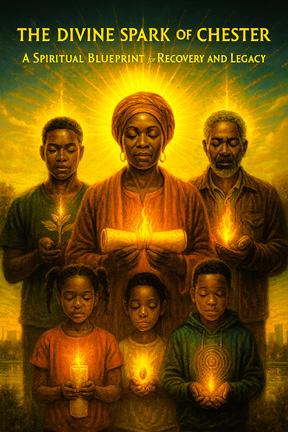
Why It Matters for Chester
THE DIVINE SPARK
A Spiritual Blueprint for
“If you bring forth what is within you, what
Chester’s recovery cannot be engineered funding, or institutional reform. It must something deeper—something sacred. concept of the Divine Spark: the inner force that resides within every individual religious doctrine. It is a spiritual truth, rising again as a blueprint for transformation.
What Is the Divine Spark?
The Divine Spark is the part of us that dignity before displacement, wisdom before survival. In the suppressed Gospel that salvation is not external—it is the already within. This teaching was silenced institutional control. But in Chester, it governance, healing, and legacy.
Spirituality as Inner Governance: Chester’s people are not broken— they are brilliant. The Divine Spark reframes recovery as a process of remembering and activating that brilliance.
Decentralized Power: Just as Jesus’ mystical teachings bypassed priests and hierarchy, Chester’s recovery must bypass gatekeepers and empower residents directly.
Legacy Activation: The Divine Spark is ancestral. It carries the wisdom of Black and Indigenous forebears who governed through balance, reciprocity, and truth. Chester’s legacy is not lost—it’s encoded in its people.
From Suppression to Awakening
The Council of Nicaea removed texts that taught direct spiritual experience, egalitarian leadership, and inner divinity. These teachings were buried— literally—because they could not be institutionalized. Chester’s story mirrors this suppression. Its brilliance was buried under decades of neglect, corruption, and erasure. But like the Nag Hammadi scrolls, Chester’s truth is resurfacing.
SPARK OF CHESTER
Recovery and Legacy what you have will save you.” — Gospel of Thomas 12:58 engineered solely through policy, must begin with the reawakening of sacred. This section introduces the inner light, wisdom, and creative individual and community. It is not a truth, suppressed for centuries, now transformation. that remembers. It remembers wisdom before trauma, and purpose Gospel of Thomas, Jesus teaches the act of bringing forth what is silenced because it threatened it offers a path toward self-

Spirituality as Infrastructure
This WHITE PAPER proposes that Chester’s recovery must include spiritual infrastructure:
• Spaces for reflection, storytelling, and ancestral honoring
• Visual tools that depict residents as radiant beings—not statistics
• Community rituals that activate the Divine Spark in youth, elders, and leaders


“Sacred Silence and the Invitation to Lead”
“To those entrusted with spiritual authority: your silence is felt. But your voice could be the spark.”
— BLACKMAN WHITE PAPER Part 2
Acknowledging the Silence
The WHITE PAPER recognizes that many of Chester’s most influential spiritual leaders have not publicly engaged with its message. This silence is not condemned—it is understood. The work presented here is unconventional. It blends policy with spirituality, legacy with economics, and ancestral frameworks with modern recovery. It is disruptive by design. But disruption is not disrespect.
Honoring Those Who Engaged
We honor Bishop Dr. Redding, who dared to ask about the relevance of melanin and scripture—a question that bridges biology, theology, and identity. We honor Maleak Ali, the Muslim businessman, from Philadelphia, who asked how Chester’s residents could prosper through manufacturing UNI Drones—a question that links spiritual dignity to economic empowerment.
These leaders did not ask for comfort. They asked for clarity. And that is leadership.
Extending the Invitation
To Chester’s Christian elite, imams, rabbis, and spiritual guides: this WHITE PAPER is not a challenge to your authority. It is a call to expand it. To root your teachings in the lived realities of Chester’s people. To explore how suppressed spiritual truths—like those found in the Gospel of Thomas or the ethics of Ma’at—can enrich your ministries, not threaten them.
We invite you to:
Host dialogues on melanin, scripture, and spiritual agency
Explore economic prophecy—how drone manufacturing, tech training, and creative entrepreneurship can fulfill sacred mandates of stewardship and abundance
Co-author spiritual chapters in future editions of the WHITE PAPER, rooted in your traditions
Strategic Framing: From Resistance to Resonance
To avoid insult, I have framed this as a missed opportunity, not a moral failure:
“I understand the discomfort this work may cause. It is meant to stretch, not shame.”
“Spiritual leaders are uniquely positioned to guide Chester’s recovery— not just through prayer, but through policy, economics, and legacy.”
“This is not a new gospel. It is a deeper reading of the one already written.”
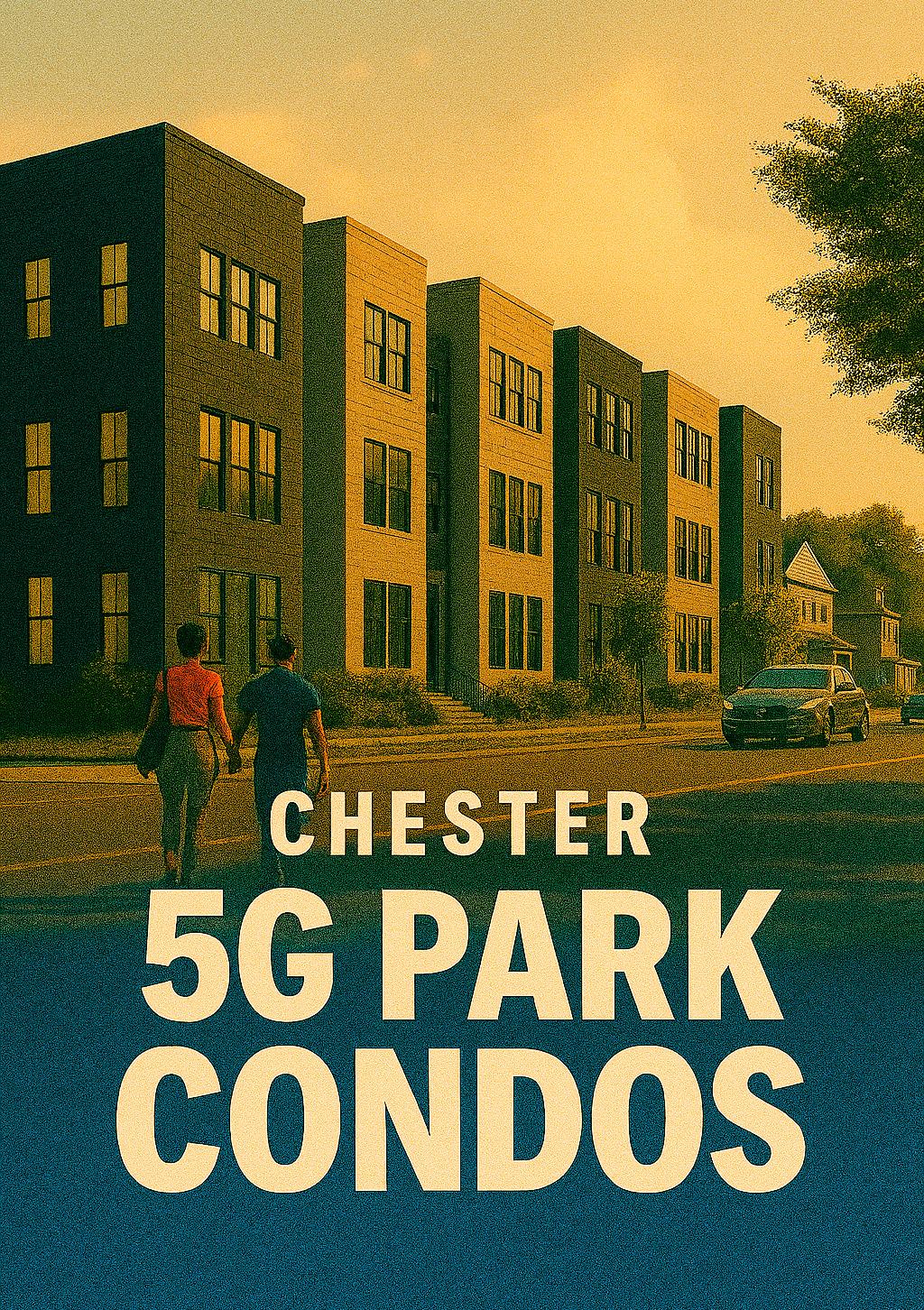
5G PARK
The Spiritual Blueprint
“We are not just building structures. We are building stories. We are building sanctuary.”
5G Park is a spiritual pivot point—a place where Black and Indigenous legacies are honored through design, where youth are mentored through proximity, and where recovery is not just economic, but emotional.
This is the beginning of Chester’s rise. And it starts with a blueprint drawn in truth, built in love, and owned by the people.
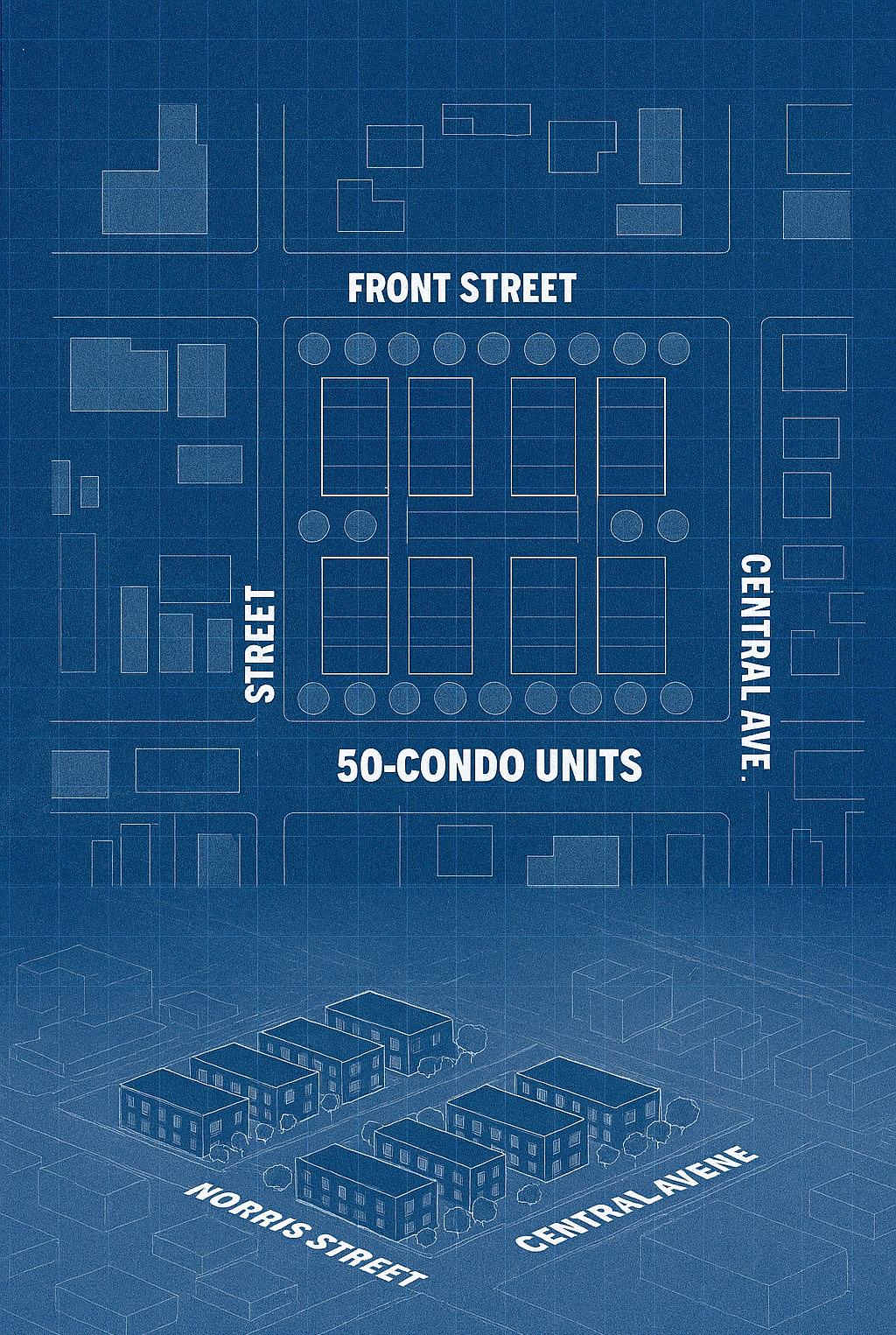
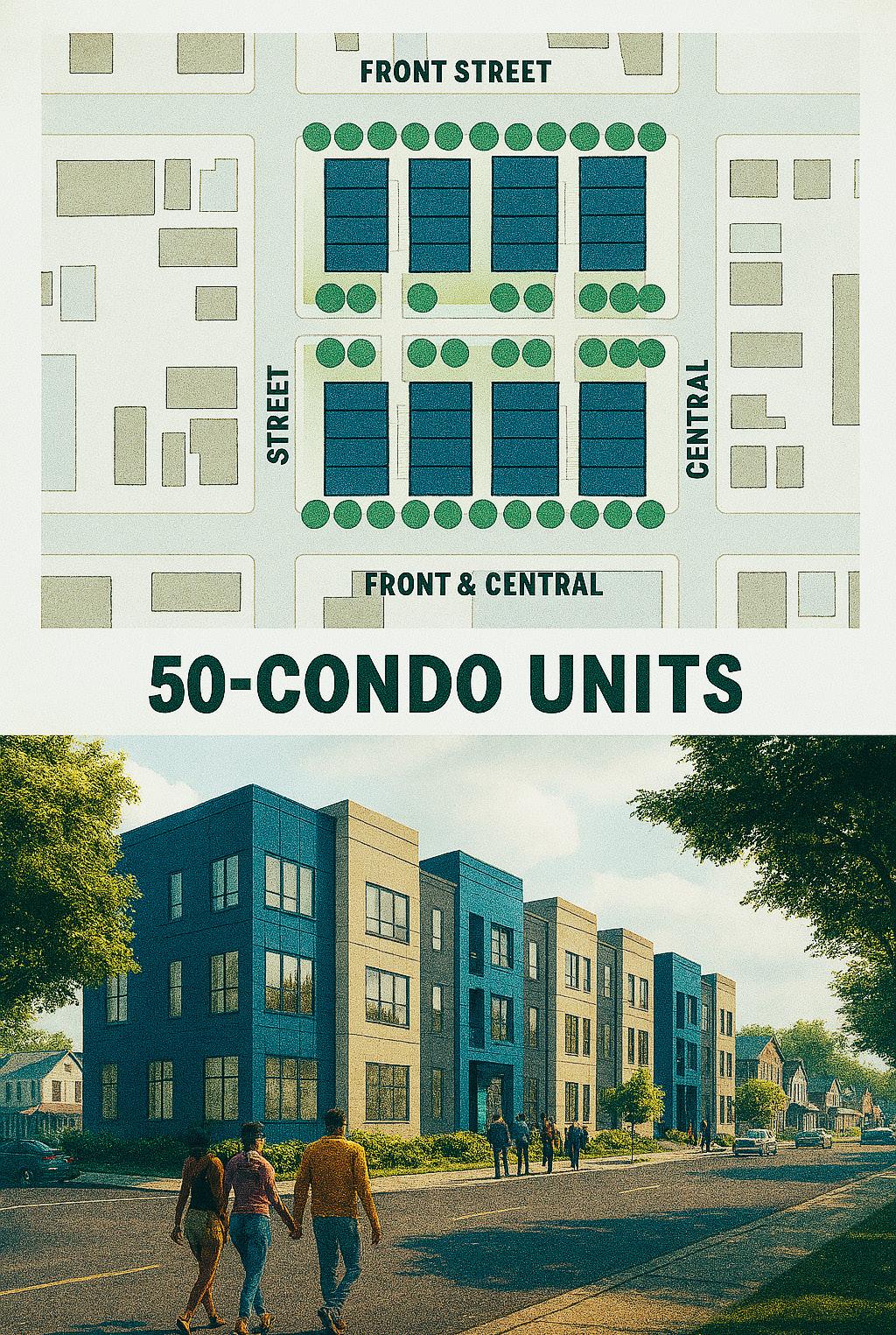
5G PARK
The Spiritual Blueprint 50 CONDOS
Starting the G5 PARK Project will generate over 300 jobs
“Over half of these workers will need housing within walking distance—making the condo model not just visionary, but necessary.”
5G Park
Ground Zero for Chester’s Smart City
“Every city has a turning point. For Chester, it begins at 5G Park.”
The construction of 5G Park is more than a real estate development— it’s a declaration of recovery. It marks the moment Chester stops being defined by receivership and starts being reimagined through ownership, innovation, and legacy.
This is where infrastructure meets imagination. Where digital connectivity, community empowerment, and architectural beauty converge to form the foundation of a Smart City built by and for its people.
Economic Impact: Jobs, Ownership, and Opportunity
Phase One of 5G Park will generate over 300 jobs, spanning construction, tech, education, retail, and community services. But this isn’t just about employment—it’s about economic dignity.
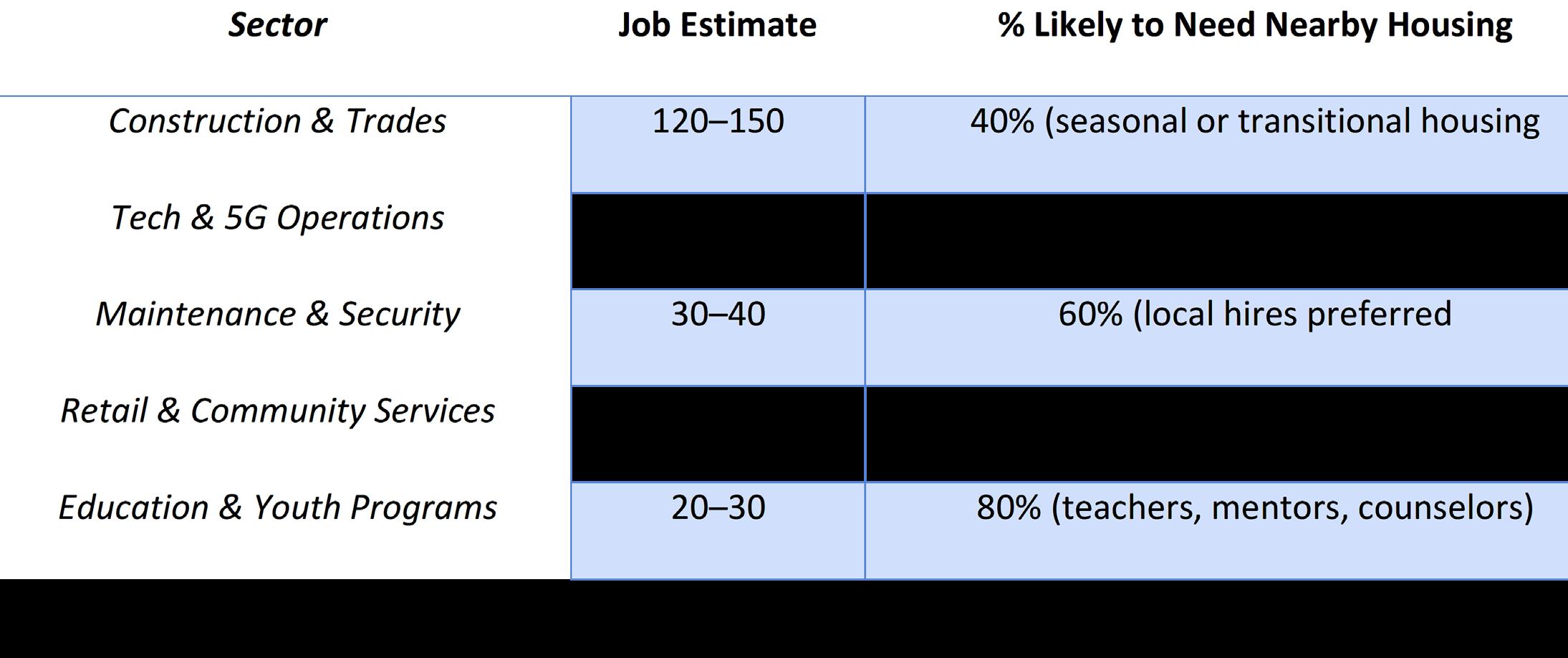
Starting the G5 PARK Project will generate over 300 jobs
“Over half of these workers will need housing within walking distance—making the condo model not just visionary, but necessary.”
The Condo Model: Ownership Without the Burden
SMART CITY CONDOS- 50 CONDOS are designed for:
1. Small families, professionals, and entrepreneurs seeking ownership without the upkeep of a traditional house.
2. First-time buyers priced out of single-family homes but ready to invest in legacy.
3. Tech workers and educators who want to live near their workplace and contribute to community growth
Key Features:
1. Energy-efficient design
2. Walkable access to 5G Park, youth centers, and gardens
3. Ownership pathways for Black and Indigenous residents
4. HOA model that supports community governance and equity
“This isn’t just housing. It’s healing. It’s legacy. It’s the infrastructure of recovery.”*
How Chester Will Gain
1. Increased Homeownership: Each condo unit represents a new tax-paying resident, stabilizing Chester’s fiscal base and reversing population decline.
2. Local Economic Growth: Residents support nearby businesses, schools, and services—creating a feedback loop of prosperity.
3. Reduced Commuting & Emissions: Walkable housing near 5G Park lowers traffic, pollution, and stress.
4. Community Stability: Ownership builds pride, permanence, and participation—especially among families historically excluded from housing markets.
5. Narrative Shift: Chester becomes known not for its stigma, but for its innovation, resilience, and beauty.
Ownership as Reparations—Recovery Through the HOA Model
“This is not just real estate. It’s reparative architecture. It’s a blueprint for dignity, dividends, and community.”
The 5G Park duplex model redefines homeownership in Chester—not as a private escape, but as a public investment in legacy, equity, and recovery.
Each of the 50 two-story duplexes offers:
• Two separate living units—one for the owner, one for a tenant.
• Monthly rental income that offsets mortgage costs and builds generational wealth.
• Built-in equity through property appreciation and community-led development
But the real innovation lies in the Homeowner’s Association (HOA)—a collective body of investor-owners who manage the site with professionalism, transparency, and shared purpose.
Financial Benefits for Investor-Owners
• Rental Income: Owners can earn $900–$1,200/month from the second unit, creating a passive income stream
• Tax Incentives: First-time buyers and community developers may qualify for local and federal credits
• Equity Growth: As Chester recovers, property values rise—turning each duplex into a long-term asset
• HOA Management: All tenant issues (maintenance, screening, complaints) are handled by the HOA office, preserving owner privacy and professionalism
“The tenant need never know the owner lives next door— because the HOA handles everything.”
Communal Benefits Through the HOA
• Shared Governance: Owners vote on site improvements, community events, and tenant policies
• Professional Oversight: The HOA contracts local maintenance crews, security teams, and landscaping services—creating jobs and pride
• Tenant Screening: Ensures safety, stability, and dignity for all residents
• Legacy Building: Owners become stewards of Chester’s recovery—not just landlords, but leaders
Chester’s Road to Recovery
This model is more than housing—it’s healing. It’s a reparative framework that:
• Restores ownership to Black and Indigenous families historically excluded from housing markets
• Creates walkable, safe, and beautiful neighborhoods near job centers like Riverbridge Industrial Complex where 5G Towers may be assembled.
• Builds equity through community—not extraction
• Repositions Chester as a city of innovation, resilience, and legacy
“From reparations to recovery, 5G Park is the first step. And every duplex is a declaration: We belong. We build. We rise.”

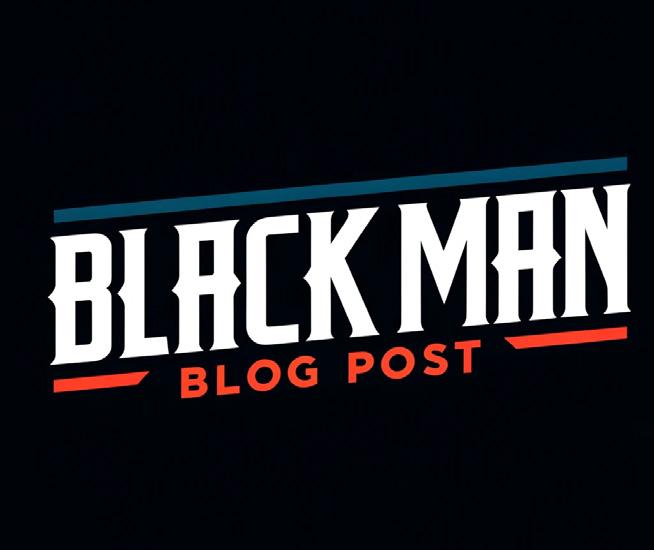
How Did My Son Get a Gun?
By Frank Porter | BLACKMAN WHITE PAPER Part 2
A Father’s Question, A Community’s Reckoning
The day my nephew died, my brother asked me: ‘How did my son get a gun?’ That question still echoes. Not just in our family—but in every Black father’s heart.”
This post isn’t just personal. It’s political. It’s spiritual. It’s infrastructural. It’s about how systems fail our children, how silence protects the profiteers, and how Chester—and cities like it—are stigmatized while being starved of resources.
We were never the manufacturers. We were the targets.

Who Profits from the Gun Flooding in Black Communities?
These Arms dealing, Black Market, Gun Suugglers are not coming from the foreign enemies of America. The Enemy Is Within.
• Gun Manufacturers: Companies like Smith & Wesson, Glock, and Sig Sauer produce weapons for both civilians and police departments.
• Law Enforcement Contracts: Police departments are outfitted with militarygrade weapons—often from the same suppliers that feed the civilian market.
• Black Market Channels: Straw purchases, theft, and weak regulation allow guns to circulate freely in poor communities.
From Heroin to Guns: The Evolution of Destruction in Black Communities
“First they gave us heroin. Then they gave us crack. Now they flood our streets with guns. The method changes—but the mission stays the same: destabilize, criminalize, and profit.”
Phase 1: Heroin in Harlem (1950s–1970s)
Harlem became the “Dope Capital” of America, with up to $350 million in heroin stored annually.
• The drug trade offered economic survival in the face of housing discrimination, job loss, and urban neglect.
• Community leaders described heroin as a response to “unemployment, poverty, and the strangulation of ghetto life.”
• The Rockefeller Drug Laws (1973) criminalized addiction, leading to mass incarceration rather than treatment.
Phase 2: Crack in Chester and Philly (1980s–1990s)
Crack cocaine hit Chester and West Philly like a bomb—cheap, addictive, and devastating.
• Teenagers were recruited as street dealers, while families were torn apart by addiction and police raids.
• The CIA-Contra scandal revealed that U.S.-backed rebels trafficked cocaine into Black neighborhoods to fund foreign wars.
• Sentencing disparities (100-to-1 for crack vs. powder cocaine) targeted Black users and dealers disproportionately.
Phase 3: Guns Replace Drugs (1990s–Present)
As crack faded, guns became the new epidemic—easier to access, harder to trace, and deadlier.
• A 2024 Penn study found that a 14-year-old Black male in Philadelphia has a 1 in 8 chance of being shot or killed before age 25.
• For white youth, it’s 1 in 100. In Chester, the numbers are likely worse—though underreported.
• Gun manufacturers profit on both ends: selling to civilians and police, while Black communities bury their children.
The Constant: Profit Over People, whether it’s heroin, crack, or guns—the pattern is clear: External supply chains, not internal pathology. Profit-driven policies, not public health. Criminalization of Black survival, not accountability for systemic neglect.
“We were never the manufacturers. We were the targets.”
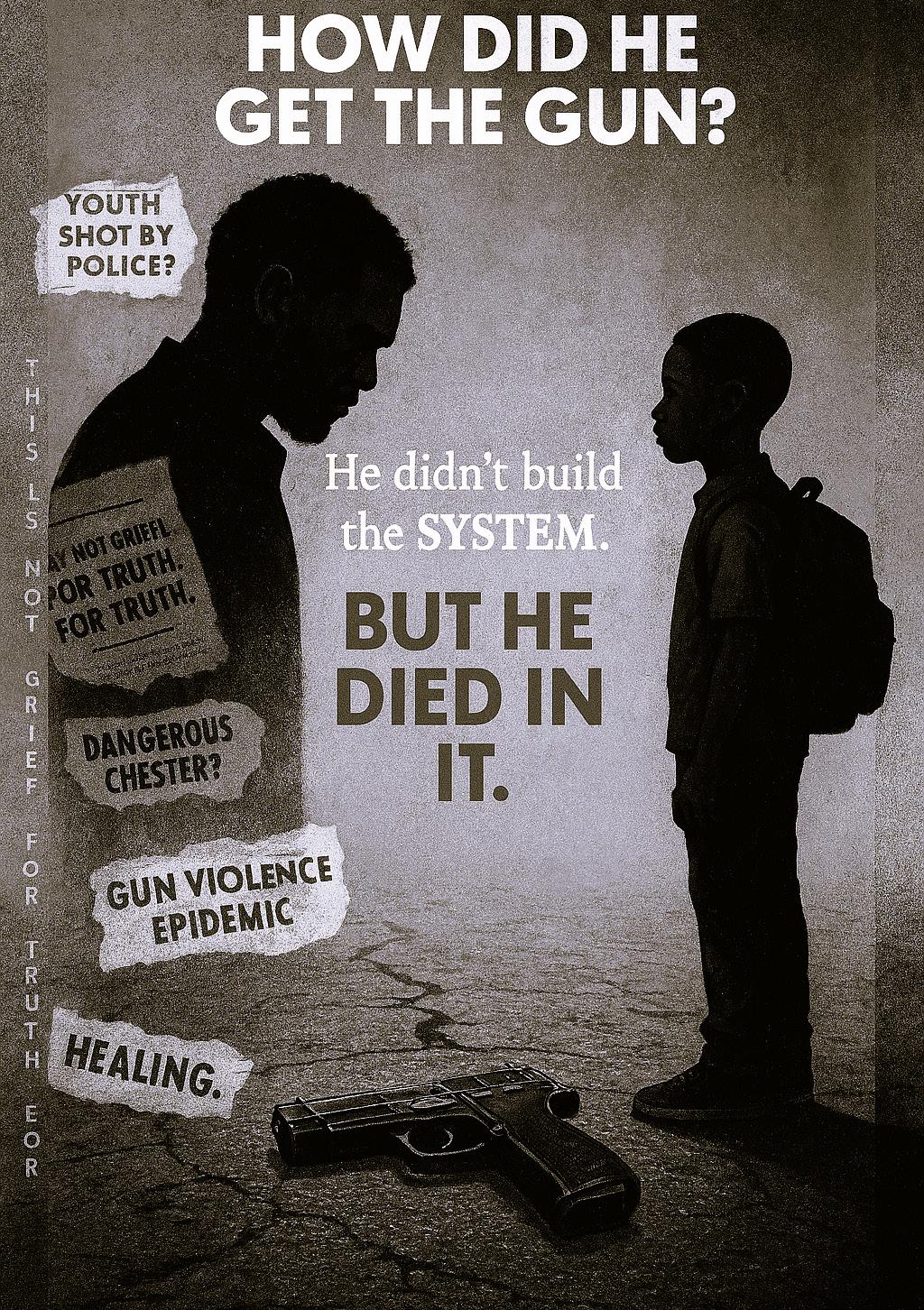
HOW YOU WIN THE ‘WAR ON POVERTY’: YOU KILL ALL THE POOR PEOPLE... OR GET THEM TO KILL THEMSELVES. HE WAS BARELY FOURTEEN
CHESTER STIGMATIZED “DANGEROUS CITY”

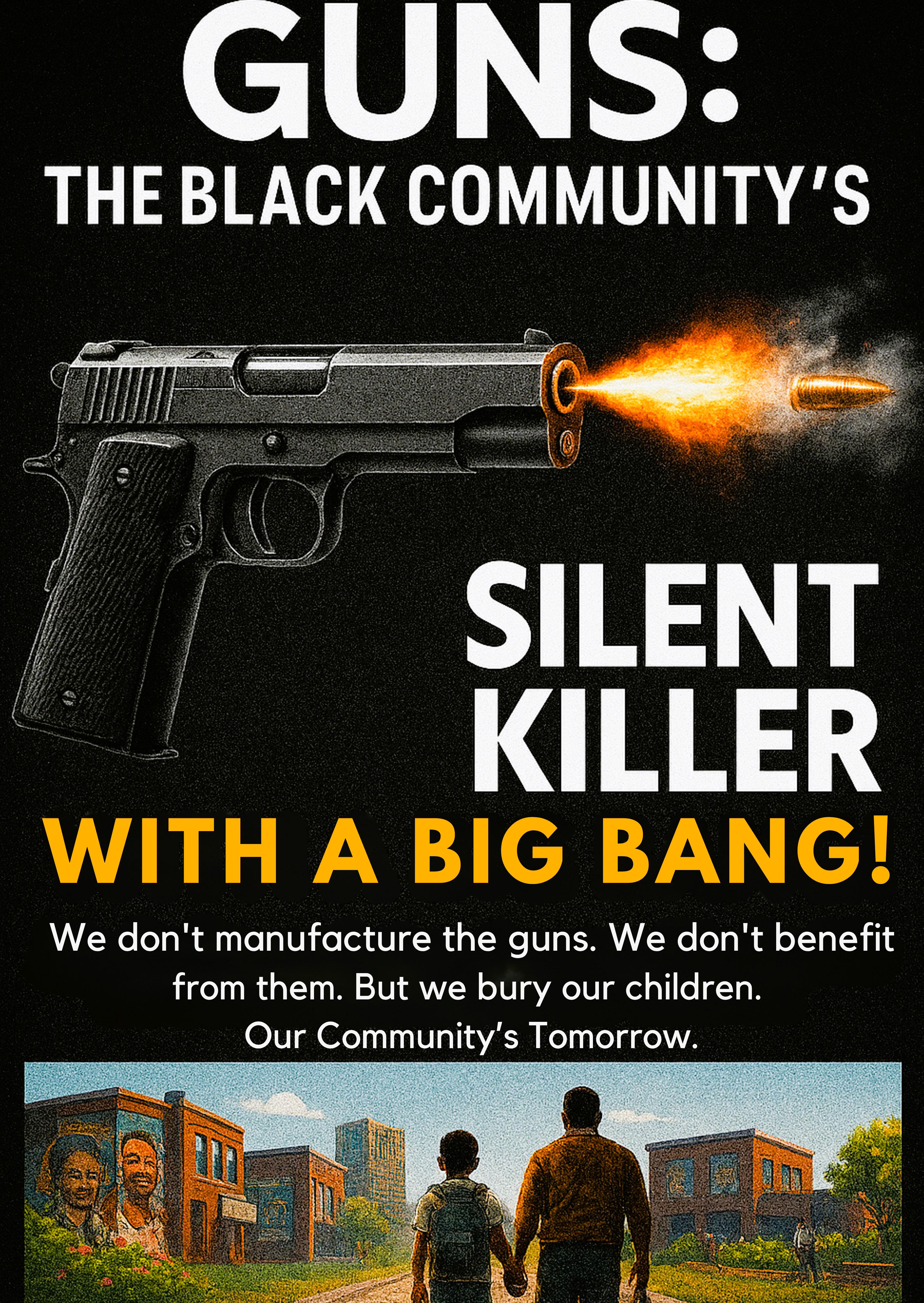
The Numbers Behind the Bang
“We don’t manufacture the guns. We don’t profit from them. But we bury our children because of them. We bury our future because of them.”
Since 1990, the Chester–Philadelphia corridor has witnessed a slowmotion massacre—one that rarely makes national headlines but leaves families shattered and communities stigmatized. Gun violence has become the leading cause of death for Black youth in this region, outpacing disease, accidents, and even incarceration.
The Devastating Disparity
According to a 2024 study by Penn’s Department of Family Medicine and Community Health, a 14-year-old Black male in Philadelphia has a 1 in 8 chance of being shot or killed by a firearm before age 25.
In contrast, a non-Hispanic white 14-year-old male faces a 1 in 100 chance of firearm injury or death by the same age.
National CDC data from 2023 shows that Black children die from firearm homicide at a rate of 11.7 per 100,000, compared to 2.1 per 100,000 for white children.
In Chester, where systemic disinvestment and over-policing collide, the numbers are likely even higher—though underreported.
“This isn’t just a crisis. It’s a pattern. A pipeline. A policy failure. A profit model.”
Historical Echoes
In the 1970s, Heroin in Harlem nearly wiped out a generation of Black men. In the 1980s, Crack in Chester and Philly tore through families, fueled by external trafficking and internal despair.
Since the 1990s, guns have replaced drugs as the primary tool of destruction—but the supply chain remains eerily similar: external, unregulated, and profitable.
What This Means for Chester
Every youth death is a rupture in the community’s future.
Every funeral is a reminder that the system is working exactly as designed.
Every statistic is a story—of a child who had dreams, a parent who had hope, and a city that deserves better.
“We are not dangerous. We are endangered.”
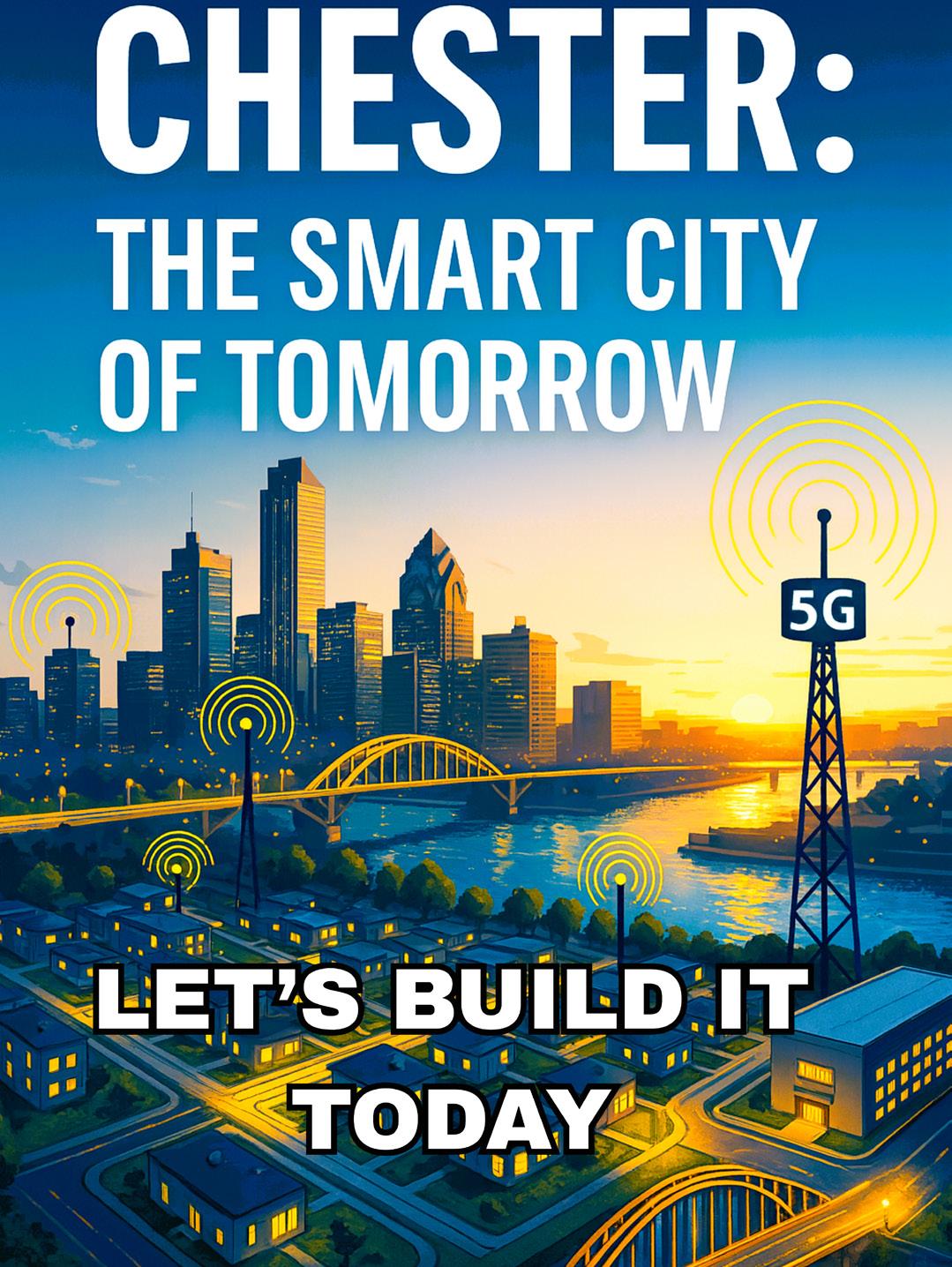
We Are the Architects of Our Own Recovery
“This is not just a paper. It’s a reckoning. It’s a roadmap. It’s a love letter to Chester—and to every Black community that has been buried beneath headlines, statistics, and silence.”
We have traced the pipeline—from heroin to crack to guns. We have named the systems that profit from our pain. We have mourned our children, honored our ancestors, and dared to imagine a future where Black legacy is not erased, but elevated.
This eBook is not the end. It is the beginning of a new chapter— one where storytelling becomes strategy, and strategy becomes infrastructure.
What We Propose
Truth-Telling: Publish this eBook across platforms—schools, city halls, community centers, and digital spaces.
Visual Advocacy: Use photo-realistic chapters and infographics to spark dialogue and policy change.
Community Engagement: Host workshops, healing circles, and SMART CITY forums rooted in this work.
Infrastructure Investment: Align your condo vision with Chester’s Recovery Plan to show how beauty, safety, and ownership can be part of fiscal and emotional healing.
Legacy Building: Position PhillyGhostWriter.com as the hub for storytelling, consulting, and urban transformation.
Why Chester Will Succeed
Because we are not waiting for permission. Because we are not asking for pity. Because we are building with love, truth, and vision. Because Chester will rise—not in spite of its tragedies, but because we dared to tell the truth.

CHESTER’S REBIRTH STARTS NOW!
CHESTER’S SMART CITY
5G CONDO PARK
WHITEPAPER PART 2 BLACKMAN
